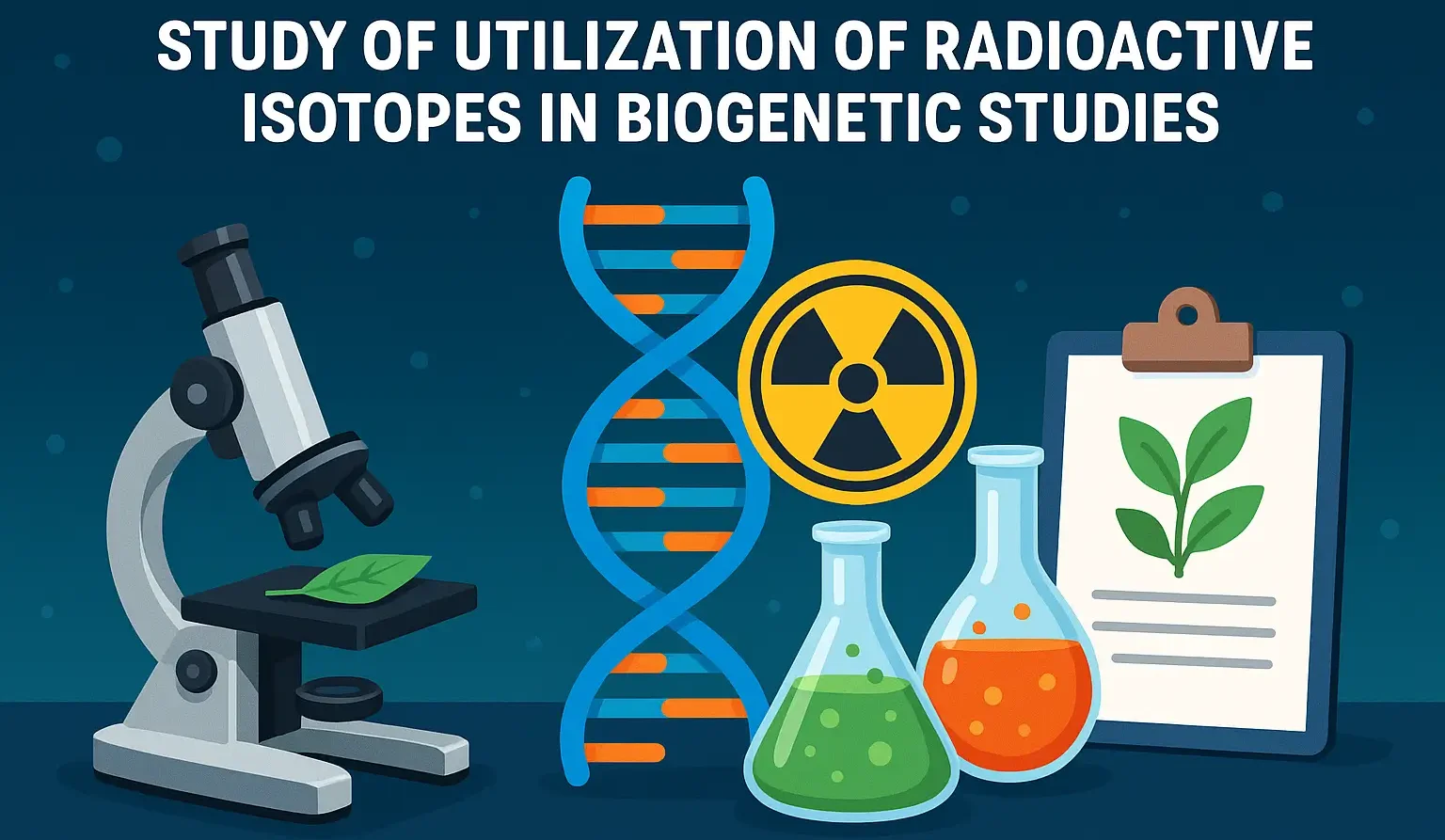- Study of Utilization of Radioactive Isotopes in Biogenetic Studies helps trace metabolic pathways by labeling specific atoms.
- Study of Utilization of Radioactive Isotopes in Biogenetic Studies enables identification of gene expression and protein synthesis sites.
Introduction to Isotopes and Radioisotopes
Isotopes
- Atoms of the same element that have the same number of protons but differ in the number of neutrons.
- Examples of Carbon Isotopes:
- Carbon-12 (stable)
- Carbon-13 (stable)
- Carbon-14 (radioactive)
Radioisotopes
- These are unstable isotopes that decay over time, emitting radiation in the form of alpha (α), beta (β), or gamma (γ) rays.
- Common Radioisotopes in Biogenetic Studies:
- Carbon-14: Studies carbon fixation in photosynthesis.
- Phosphorus-32: Studies DNA and RNA metabolism.
- Tritium (Hydrogen-3): Studies protein synthesis.
- Sulfur-35: Studies protein sulfation.
Detection of Radiation
- Radiation emitted by radioisotopes can be detected using:
- Geiger counters.
- Liquid scintillation counters.
Techniques in Biogenetic Studies Using Radioisotopes
-
Radioactive Labeling
- Molecules of interest are tagged with radioactive isotopes to monitor their behavior in biological systems.
-
Autoradiography
- Radioactive molecules are detected on photographic films, revealing their distribution in tissues or cells.
-
Liquid Scintillation Counting
- Sensitive detection of beta radiation in liquid samples.
-
Gamma Spectroscopy
- Detects gamma rays emitted by radioisotopes to measure their activity.
Applications in Biogenetic Studies:
-
Pathway Elucidation:
- Example: Incorporating 14C^14C14C-labeled glucose to determine its conversion into aromatic compounds via the shikimic acid pathway.
-
Secondary Metabolite Biosynthesis:
- Example: Using 14C^14C14C-acetate to trace the formation of polyketides or fatty acids.
-
Rate and Regulation Studies:
- Quantifying how quickly certain metabolites are synthesized under different conditions.
-
Dynamic Interactions:
- Investigating metabolic flux in response to environmental stress.
Advantages
- Provides precise information about precursor-product relationships.
- Allows investigation of complex networks that are difficult to unravel using conventional methods.
Limitations:
- Radioactive waste and safety concerns require special handling and disposal protocols.
- Resolution can be limited by the turnover rate of intermediates and the dilution of the isotope signal as it is incorporated into larger biomolecules.
Click Here to Watch the Best Pharma Videos

